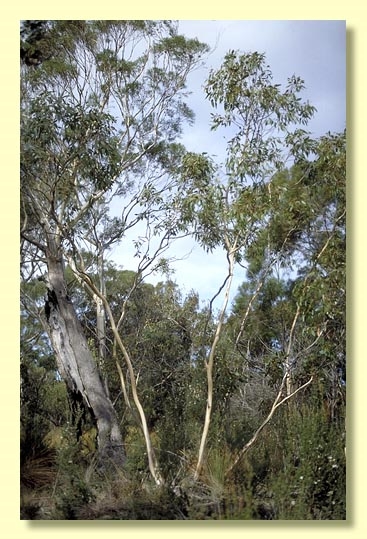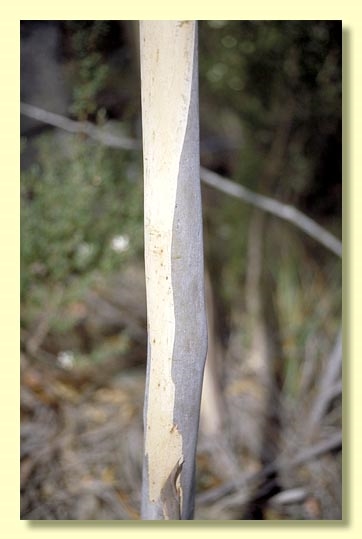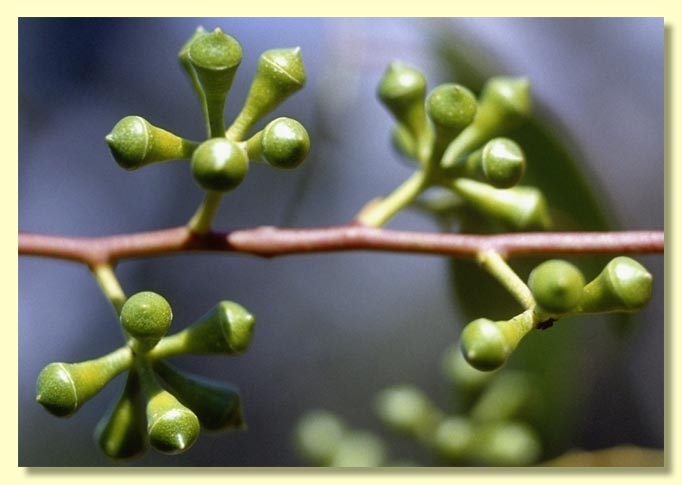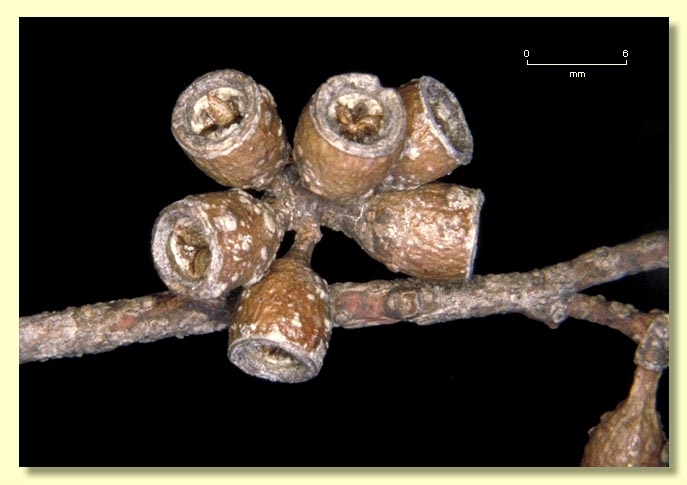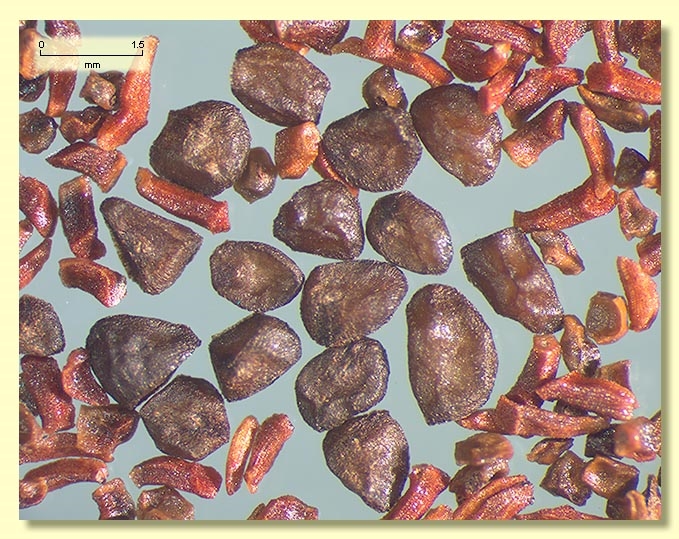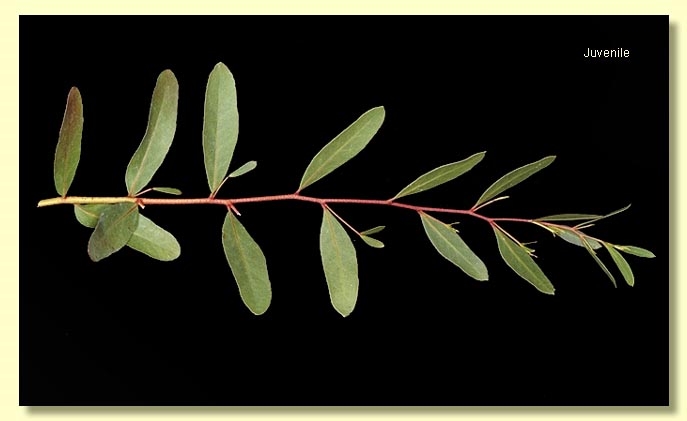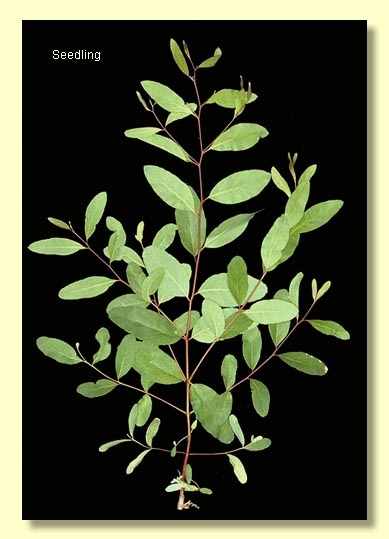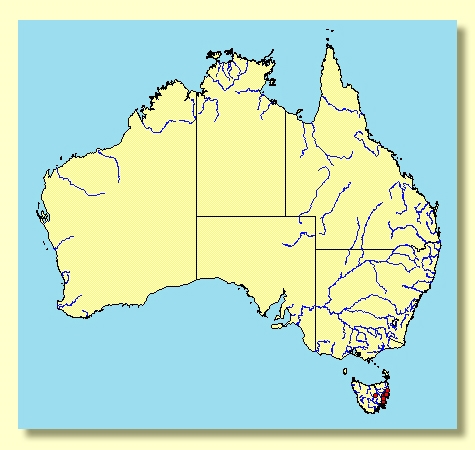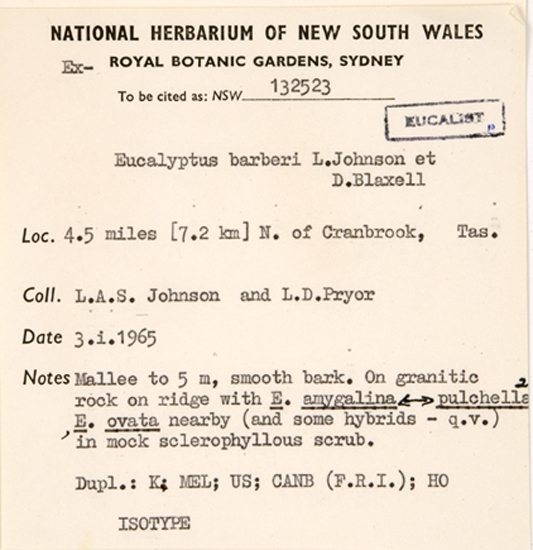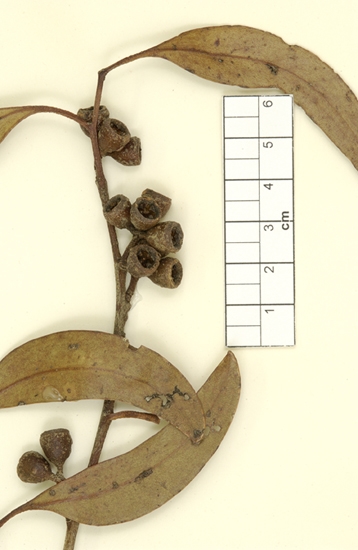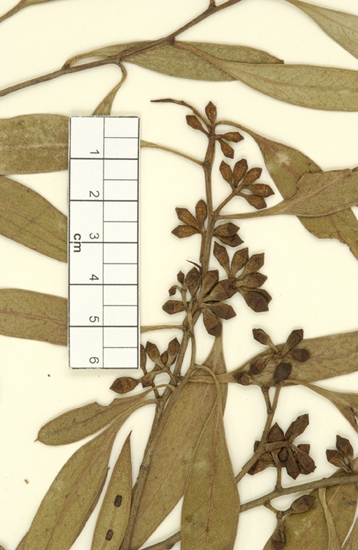Euclid - Online edition
Eucalyptus barberi
Eucalyptus | Symphyomyrtus | Maidenaria | Triangulares | Foveolatae
Bark smooth throughout or with loose, grey slabs of rough bark at base or trunks, smooth bark grey, white, cream, green, yellow or brown, often with ribbons of decorticated bark in the upper branches.
Juvenile growth (coppice or field seedlings to 50 cm): stem rounded or square in cross-section, warty or smooth; juvenile leaves opposite and sessile for 6 to 11 nodes, becoming alternate, petiolate, lanceolate to elliptical or oblong, 3–8 cm long, 1–3 cm wide, margin entire or crenulate, green.
Adult leaves alternate, petiole 1–3.5 cm long; blade elliptical to lanceolate or falcate, 5–14 cm long, 1–3.5 cm wide, flat or undulate, base tapering to petiole, margin entire or crenulate, concolorous, glossy, green, side-veins greater than 45° to midrib, moderately to very densely reticulate, intramarginal vein parallel to and well-removed from margin, oil glands mostly intersectional.
Inflorescence axillary unbranched, peduncles 0.5–1.8 cm long, buds 7 per umbel, pedicels 0.2–0.4 cm long. Mature buds ovoid to diamond-shaped or clavate (0.7–1.1 cm long, 0.4–0.6 cm wide), green to yellow sometimes slightly glaucous, scar present, operculum conical or rounded, often beaked (0.3–0.5 cm long), stamens inflexed, anthers cuboid to oblong, versatile, dorsifixed, dehiscing by longitudinal slits (non-confluent), style long, stigma blunt or tapered, locules 3 or 4, the placentae each with 4 vertical ovule rows. Flowers white.
Fruit pedicellate (pedicels 0.1–0.5 cm long), cupular, cylindrical or obconical, 0.5–1 cm long, 0.6–0.9 cm wide, disc raised-annular to level or slightly descending, valves 3 or 4, near rim level or enclosed.
Seeds dark brown to reddish brown or blackish, 1.5–2 mm long, ovoid or flattened-ovoid, usually lacunose, dorsal surface smooth, hilum ventral.
Cultivated seedlings (measured at ca node 10): cotyledons bilobed to oblong; stems square to rounded in cross-section, slightly warty; leaves always petiolate, opposite for 5 to 10 nodes, then alternate, oblong to elliptic or ovate, 3–8 cm long, 1–3 cm wide, base rounded to tapering, green.
Flowering has been recorded in August, September, November and December.
A mallee of central eastern Tasmania, it has obvious affinities with E. ovata with which it may occur although away from the strictly swampy sites typical for E. ovata. E. barberi has narrower juvenile leaves, more obovoid buds and cupular to cylindrical fruit.
Eucalyptus barberi belongs in Eucalyptus subgenus Symphyomyrtus section Maidenaria because the cotyledons are bilobed, inflorescences axillary, anthers versatile and seeds flattened-ovoid. Within this large section, E. barberi is one of ten species forming subsection Triangulares series Foveolatae. The species are E. barberi and E. rodwayi (both Tasmanian endemics), E. brookeriana, E. ovata (both occurring in Tasmania and on the mainland) and E. aggregata, E. cadens, E. macarthurii, E. strzeleckii and E. yarraensis (found only on the mainland).

